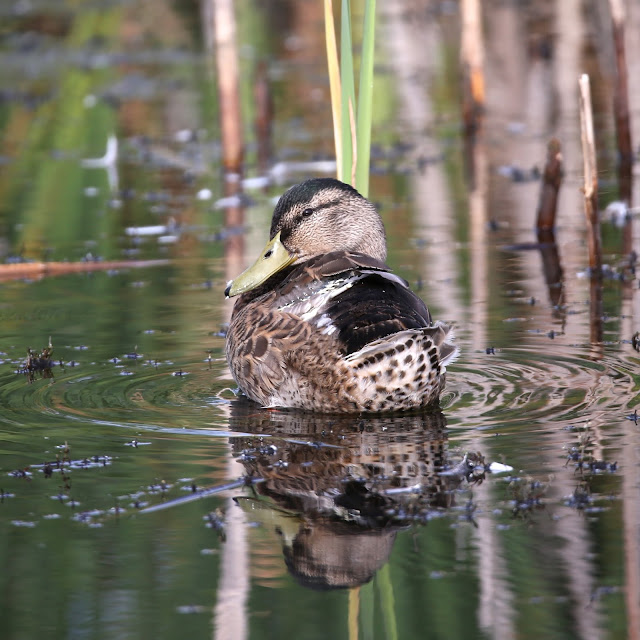The female's colouring is much more understated as she has to be camouflaged while sitting on the nest but she has the same iridescent blue speculum feathers.
Mallard chicks are precocial - that is they hatch with feathers and are able to walk and swim almost immediately. They have to feed themselves as well but are closely guarded by their mother. Again these photos were taken in spring.
These two photos from spring show the drake's head feathers as he turns his head - changing form iridescent green to velvet black.
Mallards moult in summer. This is a drake, taken this week, in "eclipse" plumage which improves his camouflage while he is unable to fly.
If I zoom in and crop it a bit tighter you can see where his new wing feathers are just starting to grow.
Mallards are common and widespread and have been doing well in recent years.
They are found in most areas of the British Isles.
The summer population of around 100,000 pairs swells to around 700,000 pairs as winter visitors arrive from the north.
The mallard is found throughout the northern hemisphere. Although we tend to think of it as a resident duck it is migratory in North America (http://www.audubon.org/field-guide/bird/mallard).
The mallard is Anas platyrhynchos, meaning broad-billed duck. Thomas Bewick included the mallard in his A History of British Birds vol II published in Newcastle in 1832. Not his finest bird portrait.
True to form he writes about how good they are to eat and then includes six pages on how to catch or shoot them!
This is John James Audubon's illustration for Birds of America.
Archibald Thorburn painted mallards on several occasions.
The mallard was also a favourite subject of Sir Peter Scott.
You can listen to Chris Packham's BBC Radio 4 Tweet of the Day on mallard here.





























No comments:
Post a Comment